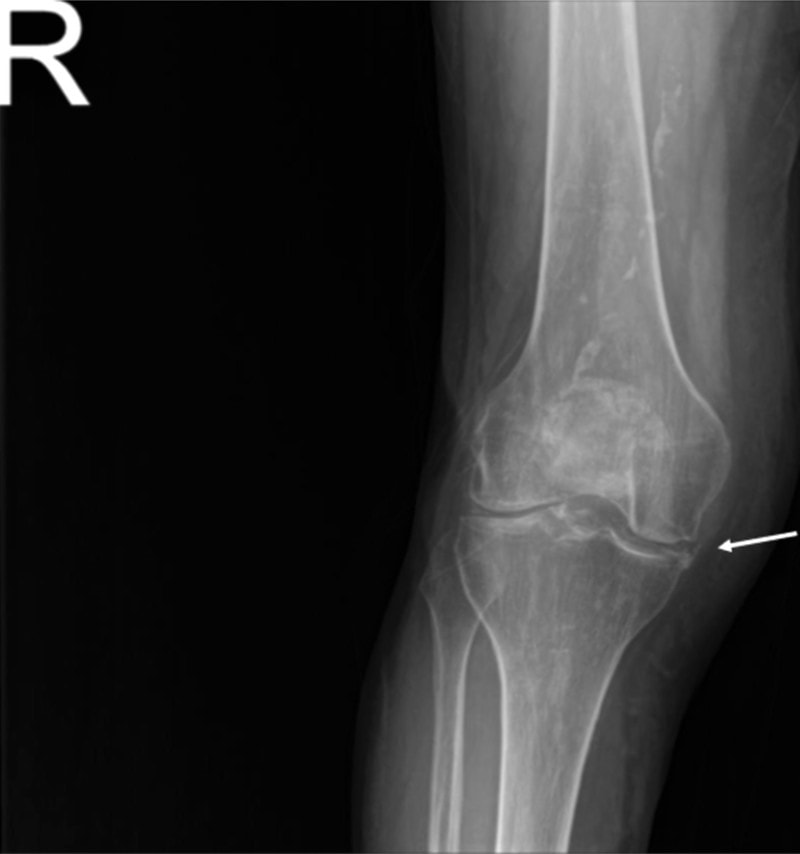Published on
Differential Diagnosis
- Intracapsular lipohemarthrosis
- Extracapsular floating fat
- Post-traumatic lipohemarthrosis of the knee joint

Diagnosis
The fat fluid level in the supra patellar bursae is consistent with post-traumatic lipohemarthrosis from intra articular fracture. The image also reveals possible fractures of the medial femoral condyle and medial tibial plateau.
Lipohemarthrosis is an uncommon phenomenon and usually secondary to an intra-articular acute fracture. It is most commonly seen in the knee but also occurs in the shoulder, elbow, and wrist.
Learnings/What to Look for
- Intra-articular fractures lead to extravasation of the blood and marrow fat in the joint space
- Fat is less dense and lighter, and will therefore separate and float on the water/blood in the joint space
- Fat is visible on the radiographs as a fat fluid level sign (FFLS), also known as fat blood level sign (FBLS)
- The fat fluid level is visible on the horizontal beam/cross table radiographs and is an indirect sign for intra-articular fracture which may not be always visible on plain radiographs (fat fluid level also may be best seen with CT, MRI, or ultrasound)
Pearls for Urgent Care Management and Considerations for Transfer
- The patient needs to remain in position for 5 minutes for fat to separate from the blood and joint fluid and produce a fat fluid level
- With a positive fat fluid level sign, an MRI is often indicated to define a fracture
- In the knee, FFLS may be secondary to fracture of tibial plateau, femoral condyle, or the patella
Acknowledgment: Images and case provided by Experity Teleradiology (www.experityhealth.com/teleradiology).
A 47-Year-Old Male with Knee Pain and Swelling After a Fall
1 2
